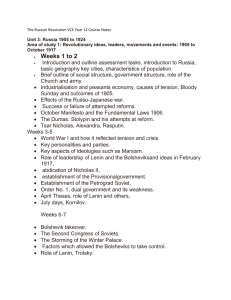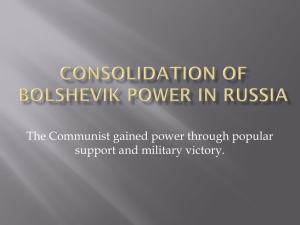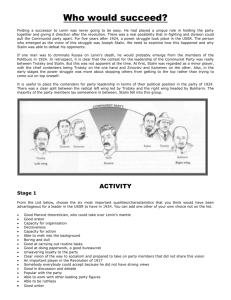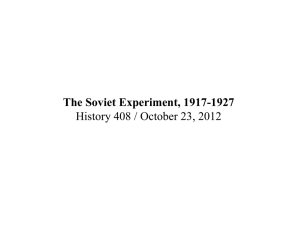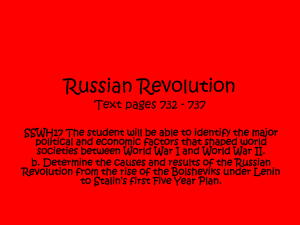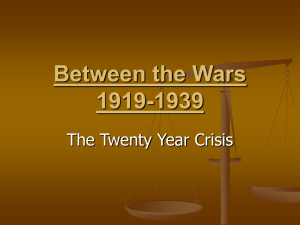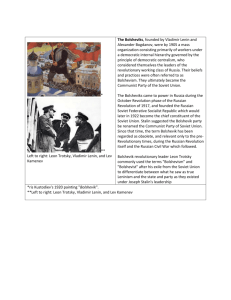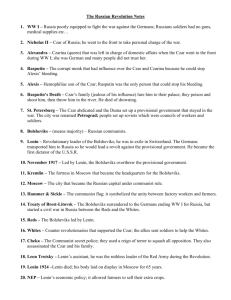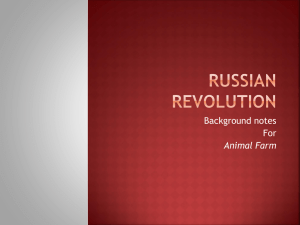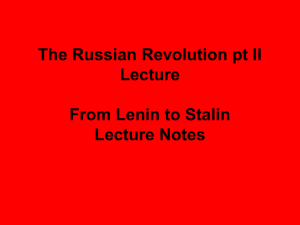Revolution and Civil War in Russia
advertisement
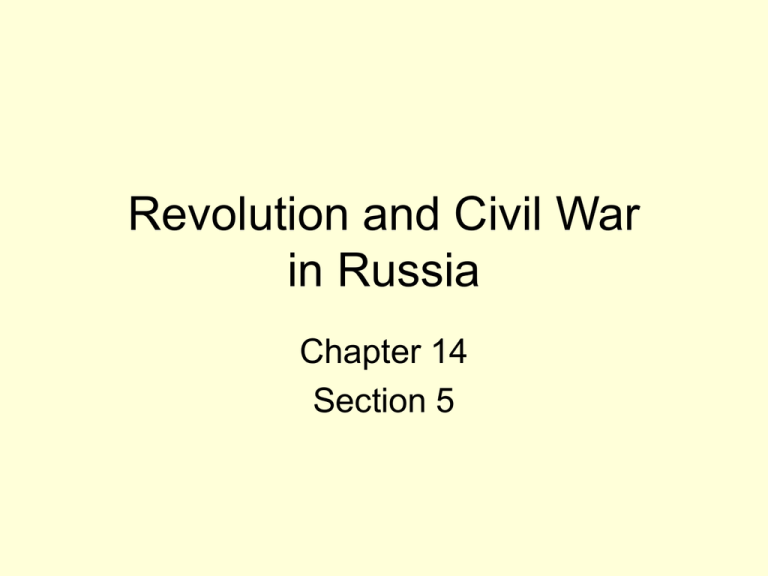
Revolution and Civil War in Russia Chapter 14 Section 5 March Revolution Ends Czarism The Czar Steps Down By March 1917, disasters on the battlefield, combined with food and fuel shortages at home, led to the collapse of the monarchy. • In St. Petersburg, workers went on strike while marchers roamed the streets shouting, “Bread, bread!” • Duma politicians set up a provisional, or temporary government Outside of the provisional government, revolutionary socialists set up soviets, or councils of workers and soldiers. Before long, the Bolsheviks, a radical socialist group, took charge. • Leader of the Bolsheviks was a revolutionary leader named Vladimir Lenin. The Bolsheviks tried to ignite revolution amongst the proletariat, or the growing class of factory, railroad, and urban wage earners. Russian Workers (Proletariats) The November Revolution Brings the Bolsheviks to Power The Fall of the Provisional Government Lenin and the Bolsheviks promised “Peace, Land, and Bread.” November 1917, the conditions were ripe for a Bolshevik takeover as the Red Guards, a band of armed factory workers and mutinous sailors joined to attack the Provisional Government. • In a matter of days the Bolsheviks took over- making Moscow the Bolshevik capital and the Kremlin their headquarters. A new red flag with an entwined hammer and sickle symbolized the union between workers and peasants. For 3 years, civil war raged on between the Reds or the Communists and the Whites or the czarist imperial officers. • The Allies intervened in the civil war, backing the Whites, but had little to do with the outcome. • Allied intervention failed, and created even more distrust between the Communists and the West. Soviet Flag The hammer and sickle -> <- Star represents communist party Moscow The Kremlin War Under Communism • The Communists used terror not only against the Whites, but their own people. They organized the Cheka, a secret police much like the czar had. • The Cheka executed ordinary citizens, even if they were only suspected of taking action against the revolution. Communists adopted policy of “war communism” where they took over banks, mines, factories, and railroads. The Communists also used former czarists officers under the close watch of commissars, Communist party officials assigned to the army teach party principles and ensure party loyalty. • They were led by another Communist party leader Leon Trotsky. By 1922, Lenin Communist government united much of old Russia into the U.S.S.R. or Union of Soviet Socialist Republics. Joseph Stalin Months before Lenin’s Death: Who will be new leader? Leon Trotsky Joseph Stalin Friends or Enemies?? Economic Policy 1921, Lenin adopted the New Economic Policy, or NEP. It allowed some capitalist ventures. Even though the government controlled all aspects of business, some peasants held on to small plots of land and freely sold their surpluses. • Lenin’s NEP was just a temporary retreat from communism, his successor would soon return the Soviet Union to “pure communism” Lenin died in 1924, leading to a struggle between Trotsky and Joseph Stalin for power. Stalin eventually took control over the Soviet Union while Trotsky fled in 1929. In 1940, a Stalinist agent murdered Trotsky in Mexico. Stalin became known for his ruthless measures to win dictatorship power. Lenin’s Tomb in Red Square - Moscow Lenin Embalmed

